Children are naturally gifted storytellers. Their vivid imaginations often surpass the boundaries of reality in adventures that grownups may only try with AI. Yet children dream up fantastical worlds as they play in their backyards, plot adventures looking up at the clouds, and think of characters while simply going about their day.
Many of these young dreamers don’t yet have the skills required to translate those visions into written stories or drawings. Enter AI: the tool that's helping young creatives bring their ideas to life like never before.
AI-powered platforms designed for storytelling are transforming the way kids interact with their creativity. By offering intuitive tools to craft narratives and illustrations, these platforms nurture a love for reading and writing from an early age.
Here’s a look at what happened when I put some of the most innovative storytelling apps designed to inspire the next generation of writers and artists to the test.
1. Magic Story AI
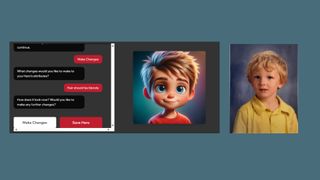
Magic Story AI bridges the gap between imagination and visualization by allowing children to be the hero of their own story. You get started by uploading a photo of your child and then the AI gets to work using an illustrated image of the child in the story. I had a little trouble when I first uploaded a picture. The first image the AI shared looked nothing like my child. After a quick preview, the AI asked if I wanted to make changes, so I prompted it to make my child’s eyes green. The AI responded that the eyes were already blue, which they weren’t, they were brown. After a few more prompts the AI adjusted the eyes to the blue I requested. From there, children can choose from a variety of themes—like fear of the dark, patience, emotions and more.
This platform uses AI to turn simple text into fully illustrated storybooks that can be viewed on the screen or printed into actual soft or hard cover books. There is not much of a preview of the book, but there is a free trial for users to explore.
Overall, Magic Story is a fun way to give children an AI-powered opportunity to see themselves as the main character. The collaborative features let children get creative alongside their parents or teachers to refine their ideas, build meaningful stories, and maybe even spark a few new ones.
2. StorySpark
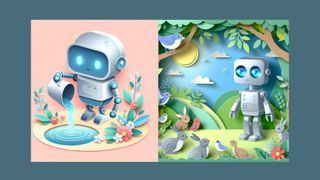
StorySpark helps children craft their stories by guiding them through the creative process. The app acts as a personal mentor, offering prompts and suggestions to flesh out ideas. For example, I started with a simple concept of “a robot saves the day,” and StorySpark will ask if you want to include more details such as a moral of the story, character description, and reading level. I appreciate the reading level option as it is nice to have my fourth grader read to my preschooler. Keep in mind that if you don’t add those details, you will end up with a simple picture book.
I appreciate that StorySpark lets children add the details to the story rather than working from a template. This ensures that their book is uniquely their own. StorySpark even lets parents copyright their story, which is a pretty cool feature.
By engaging kids in the entire storytelling process, StorySpark teaches children the fundamentals of storytelling—character development, conflict, and resolution. The AI’s gentle guidance helps boost confidence in their storytelling abilities, laying the foundation for future creative projects.
3. StoryBee
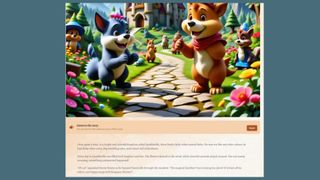
StoryBee is an AI-powered platform that enables users to create personalized stories with a simple hint or theme. I used the same “Robot saves the day” theme but didn’t get very far because the platform then immediately asks for a paid subscription. A note at the top of the welcome page says they have discontinued free trials to reduce spam and enhance safety. As a parent, I can respect that, but it stinks that there isn’t a free trial before diving in.
However, for $5/month, children can create stories and hear them read. The concept is great overall, but the output is several paragraphs with only one image. My prompt about the robot did not yield an image of one, just adorable squirrels. I’m not sure I could keep my three-year-old’s attention with the wrong image and just one picture for the whole story.
I do like how the stories can be written according to reading level, genre, and styles can be combined for a truly unique tale. This site is very easy to use and user-friendly, which is important for encouraging storytelling regardless of technical expertise.
StoryBee is also a valuable tool for educators, inspiring creativity in the classroom through AI-assisted writing exercises.
4. BedtimeStory.ai
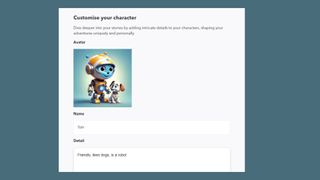
BedtimeStory.ai lets users dive into storytelling with hyper-personalized stories tailored to the child’s preferences. From the moment users logon, they are encouraged to start writing by first describing the characters in their story.
Parents can input details like their child’s name, favorite animals, or a recent dream, and the AI weaves these elements into a bedtime story, complete with illustrations. By the way, the illustrations are really good, almost Disney-like, which is surely a kid-pleaser.
After all the details for the stories and characters are entered, the AI gets to work creating your story. But, if you want to read it, you’ll have to pay for it. It’s $10/month for users to access more. Based on the finished product of story and illustrations, that price seems reasonable and within the same ballpark as other AI storytelling platforms.
The personalization from BedtimeStory.ai makes storytelling more engaging, as kids can truly be part of the narrative. It’s a great way to boost imagination and to encourage reading as a cherished nightly ritual. As a bonus, BedtimeStory.ai’s library of pre-made stories offers endless inspiration for parents who might need a little extra help at bedtime.
5. OnceUponABot
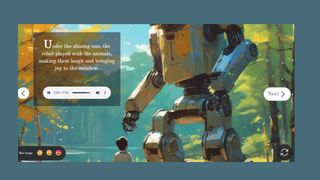
OnceUponABot offers kids an easy way to generate creative stories with minimal effort. I have to say, this is hands down, the winner. I was able to create a story and see it immediately—complete with illustrations in a storybook form, plus, have it read to me.
By inputting a few key details—like a setting, main character, and a theme—the AI generated a complete story in seconds. I stuck with the concept of “robot saves the day” and it created an impressive story. The one downside is that the images seemed a few on the pages, but it literally asked on the image to rate it, so I can tell the platform is working out the kinks.
Once users have created a story, they can have it re-read to them, they can download a PDF of it, share a link or create a new story. The free version allows users to create 3 books a month.
This AI platform is great for kids who already have ideas ready to go for their story and don’t need much prompting. The free aspect is especially nice, particularly for those hesitant to make a purchase before they’ve seen the product. Overall, OnceUponABot is a fun, AI-powered way for kids to get the structure they need to unleash their imagination, removing the pressure of perfection and allowing creativity to flow.
The future of storytelling
Beyond the thrill of creating stories, these AI platforms give kids a new way to practice critical thinking, story structure, and language development through reading and writing. And because these tools adapt to individual skill levels, they’re equally valuable for young readers just learning to form sentences and older kids refining their creative writing and reading skills.
AI-powered storytelling is helping to break down barriers to creativity. Regardless of skill level, children can bring their ideas to life be it through vivid image generation or storytelling.
More from Tom's Guide
- I tried Genmoji with Apple Intelligence — here's my favorite prompt
- OpenAI set to launch ‘Operator’ in January — AI agents that can do your tasks
- Google drops new Gemini model and it goes straight to the top of the LLM leaderboard











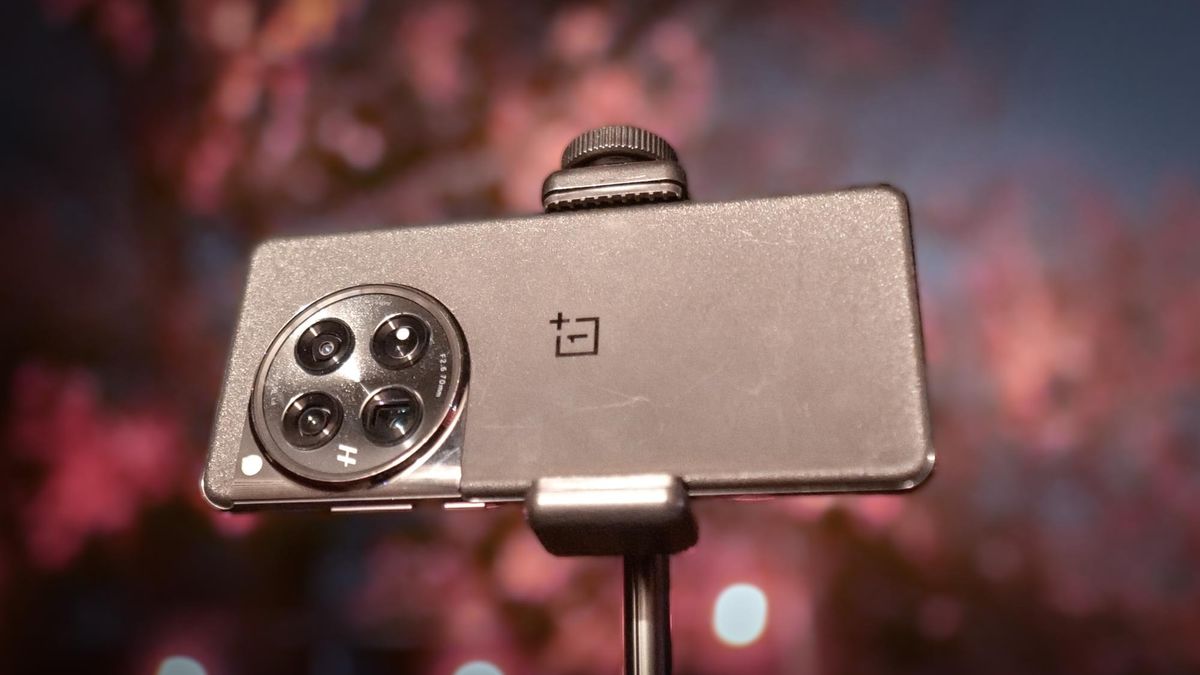









 English (US) ·
English (US) ·